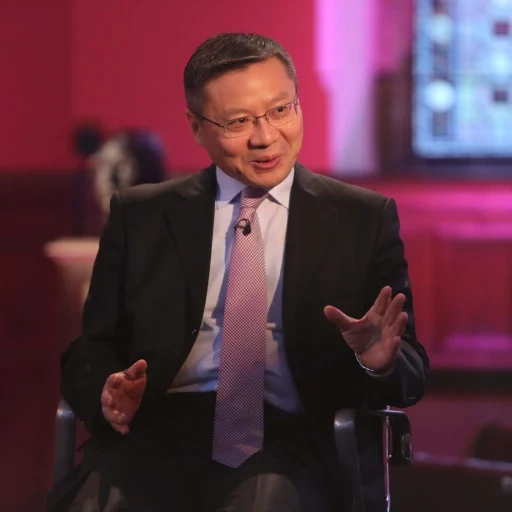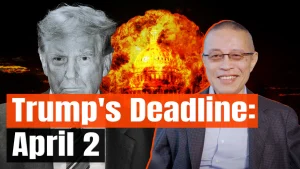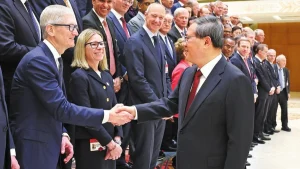When asked Is US Primed for War with China in Taiwan? Chinese Scholar Laughs
In the first half of 2024, our delegation from the China Institute at Fudan University visited South Korea, Mongolia, France, Malaysia, Thailand, Russia, and other countries. During this journey, I delivered numerous speeches on various topics, yet the Taiwan issue consistently emerged as a key concern among audiences, especially in Malaysia and Thailand, where there are significant ethnic Chinese populations, and in Russia, which maintains a close strategic partnership with China.
People were particularly interested in three main questions: First, what are the prospects for China’s peaceful reunification? Second, what will happen if the United States uses force to prevent China from unifying with the Taiwan region? Third, how will Taiwan be governed after national reunification, and will the “One Country, Two Systems” policy still be implemented?
Regarding the first question, many people expressed that for various reasons, the voices advocating for unification in Taiwan are diminishing. More people are either supporting ” independence explicitly” or supporting ” independence implicitly”
A Malaysian scholar asked me, “If this trend continues, the ‘Taiwan independence’ forces might keep winning in future ‘general elections.’ How, then, can peaceful unification be achieved?” Upon hearing this, I smiled and asked him: “Have you considered another possibility, that Taiwan may not have another so-called ‘general election’?” I continued, “The unification of our country has entered the fast lane. In this year’s government work report, the Chinese Premier used different wording when discussing national unification.
In the past, the concluding phrase was almost always ‘promoting the peaceful reunification of the motherland.’ However, this time it was changed to ‘promoting the reunification,’ without the word ‘peaceful.’ In other words, we are fully prepared for all possibilities.”
I also briefed him on the incident during the Chinese New Year when two fishermen from Fujian died under circumstances attributed to Taiwan. In response, the Chinese Coast Guard immediately began regular law enforcement patrols in the waters near Kinmen. The so-called “restricted waters” and “prohibited waters” established by the Taiwan authorities ceased to exist. I believe these patrols will soon extend to areas like Penghu, as we have no intention of turning back.
I have often expressed the view that “Taiwan independence” forces only understand the logic of strength. That’s why the Chinese Coast Guard’s recent action of boarding a Taiwanese yacht to check licenses and documents was highly effective. The whole Taiwan region now knows, the Mainland is getting serious. I have always believed that the longer unification awaits, the more limited Taiwan’s choices will be.
Moreover, there are many options remained between peaceful and non-peaceful reunification, all backed by the unwavering will of 1.4 billion Chinese people. It is time for Taiwan to return to the motherland, and we will not allow this issue to be indefinitely delayed.
For instance, we have already planned a high-speed railway to Taiwan, and it is typical of the Chinese government to complete such projects ahead of schedule. I also mentioned that after the recent tragic incident where Fujian fishermen lost their lives, Taiwan became genuinely anxious, fearing that the Mainland might take decisive action, even military force. In response, they proposed a so-called “war tax.” When the Green Camp (Democratic Progressive Party) media interviewed people on the streets of Taipei, they found that everyone was opposed to war. Many even said that if “armed reunification” began, they would immediately “embroider the red flag,” meaning they would quickly give in and pledge allegiance.
As for the second question, what should we do if the United States intervenes in the Taiwan Strait by force? My basic judgment is that the United States has neither the ability nor the guts to do so.
 Biden says he won’t rule out use of U.S. military to defend Taiwan.
Biden says he won’t rule out use of U.S. military to defend Taiwan.
Take a look at NATO, consisting of more than thirty countries, now getting difficult to sustain the Russian-Ukrainian conflict alone. A primary cause lies in the major Western powers indulging in the financialization of their economies for a long time, leading to de-industrialization.
I cite the report of the United States Naval Department: China’s shipbuilding capacity today is 232 times larger than that of the United States, and the tonnage of ships launched by the United States each year is 0.1 million tons when that of China is 23.2 million tons. How are they going to fight this battle?
In 2022, after Nancy Pelosi visited Taiwan, we imposed a military blockade on the island. The United States warships were required by the PLA to stay outside the 1,000-nautical-mile limits, and they kept their warships there without a word.The United States, which is already in hot water, needs to show global presence, or else its own allies will look down on it. Meanwhile, it also begins to realize how unprecedentedly vulnerable it is right now.
The U.S. is in the weakest moment since World War II. Both its hard power and soft power have declined so much that the Houthis, being nicknamed the ” slippers army” for their crude equipment, have dared to fire missiles at U.S. destroyers and U.S. aircraft carriers non-stop.
While China has the highest threshold among the world’s major powers for using force, the bottom line is clear. We will always strike when its needed, and once we do, we are always the decisive force that turns the situation.
I’ve also told our Russian friends that during the Cold War, no hot wars happened between the United States and the Soviet Union, but two hot wars happened between the United States and China, the Korean War and the Vietnam War, in which the United States lost both.
The third question is: After unification, how will the Taiwan region be governed? Will the “One Country, Two Systems” policy be used in Taiwan? I believe that in addressing such issues, it is crucial to demonstrate a high level of institutional confidence and confidence in our path.
Some argue that resolving the Taiwan issue militarily is not challenging, but the real challenge lies in governing Taiwan, particularly in how to eradicate the forces and ideologies of “Taiwan independence”.
In reality, there has been a monumental shift in the strengths of both sides of the Taiwan Strait, driven by our institutional advantages and Taiwan’s institutional shortcomings.
In the early stages of Taiwan’s so-called democratization, around the late 1980s, the size of Taiwan’s economy was approximately 45% of mainland China’s. Fast forward more than three decades, today Taiwan’s economy is less than 4% of the mainland’s, based on the official exchange rate. Adjusted for purchasing power parity, the gap widens even further. In my assessment, the mainland’s developed regions exhibit a higher level of modernization, overall living standards, and governance compared to Taiwan.
While some argue that eliminating the influence of the “Taiwan independence” ideology is challenging, I believe this ideology will not endure for long. It lacks significant cultural and historical roots, as well as a solid legal foundation.
Over the past three decades, the “Taiwan independence” forces have been able to act with impunity for various reasons, leading to the widespread dissemination of “Taiwan independence” ideology. This situation brings to mind the era before World War II when Fascism flourished in Germany, but swiftly crumbled with the downfall of Hitler’s regime.
While it is crucial to be well-prepared and strategize before taking action, I have delved into studying the Chinese model extensively. One notable characteristic of our model is that we do not wait for perfect conditions before initiating action.
When we identify the overarching direction, we seize every opportunity, boldly exploring and moving forward. We often learn through practice, adapt to challenges as they arise, and grow through the struggles. In the end, all issues find resolutions.This approach drives our Reform and Opening-up, as well as our “Belt and Road” initiative.
Regarding the “One Country, Two Systems” arrangement, we have always viewed it as a sound institutional framework. However, since Taiwan has consistently rejected it, why should we confine ourselves needlessly? We will undoubtedly adapt to the changing times and break free from the “One Country, Two Systems” model when necessary.
Editor: Catherine Yang



